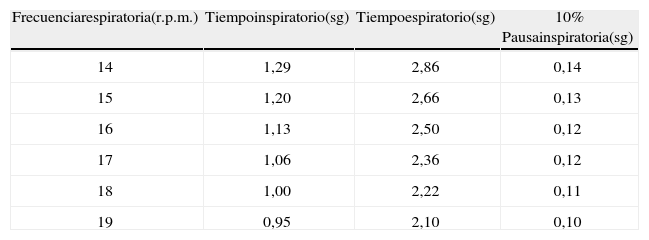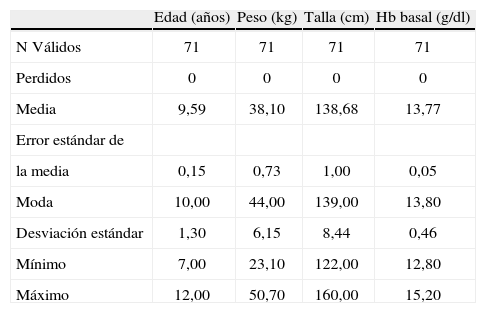En la monitorización anestésica, la presión de la vía aérea se mide en el respirador o en la conexión más proximal posible al tubo endotraqueal.
ObjetivosComparar las presiones en vía aérea y bucles presión/volumen obtenidos antes del tubo endotraqueal con los obtenidos intratraquealmente.
Material y métodosEstudio prospectivo observacional simple. Pacientes de 7–12 años; ASA I; ventilados en volumen control, I:E (1:2). Medición de las presiones pico y plateau, y bucles presión/volumen, en el interior de la tráquea y extratraqueales. Se diseñó un dispositivo especial para monitorizar presiones endotraqueales. Ambas sondas conectadas al mismo sistema de análisis espirométrico. Las variables se analizaron en inicio, 5’, 10’, 15’, 20’, 30’, 40’, 50’ y 60 minutos tras intubación. Se realizó comparación de medias (T Student), coeficiente de correlación de Pearson (r) y de Spearman (ρ) para las presiones obtenidas; y se determinó existencia de modelos de regresión.
ResultadosIncluimos 71 pacientes. Las presiones, presentaron un diferencial entre ambos sistemas de 3,5±0,35cm H2O (p<0,01); no existiendo diferencias entre presión máxima y presión plateau endotraqueales. Las áreas intratraqueales de los bucles presión/volumen fueron un 15% inferiores a las extratraqueales. La r entre presión pico y plateau intratraqueal fue de 0,998 (p<0,01). La r entre presión pico intratraqueal y extra-traqueal fue de 0,981 (p<0,01). Aplicando ANOVA se confirmó un modelo de regresión lineal.
ConclusionesLa diferencia de las mediciones de las presiones dentro de la tráquea y extratraqueales, son debidas a los diferentes lugares donde se realiza la medición.
In the monitoring of anesthesia, airway pressure is measured in the ventilator or at the closest possible connection to the endotracheal tube.
ObjectiveTo compare the airway pressures and pressure-volume loops obtained before connection to the endotracheal tube with those obtained in the trachea.
Material and methodsWe carried out a single-blind prospective observational study on ASA 1 patients between the ages of 7 and 12 years ventilated in volume-control mode with an inspiration-to-expiration ratio of 1:2. Intratracheal and extratracheal peak and plateau pressures and pressure-volume loops were recorded. A special device was designed to monitor intratracheal pressure. Both sensors were connected to the same spirometric analysis system. The variables were measured on intubation and 5, 10, 15, 20, 30, 40, 50, and 60 minutes after intubation. The recorded pressures were compared using the t test, the Pearson product moment correlation coefficient (r), and the Spearman rank correlation coefficient (ρ), and regression models were fit to the data.
ResultsSeventy-one patients were enrolled. The mean (SD) pressure difference between the 2 systems was 3.5 (0.35)cm H2O (P<.01) and no differences between the endotracheal peak pressures and the plateau pressures were observed. The intratracheal areas of the pressure-volume loops were 15% lower than the extratracheal areas. The value of r for the correlation between the intratracheal peak and plateau pressures was 0.998 (P<.01). The value of r for the correlation between the intratracheal and extratracheal peak pressures was 0.981 (P<.01). Analysis of variance confirmed the linear relationship.
ConclusionsThe difference between the intratracheal and extratracheal pressure measurements is due to the different locations at which the measurements are taken.













